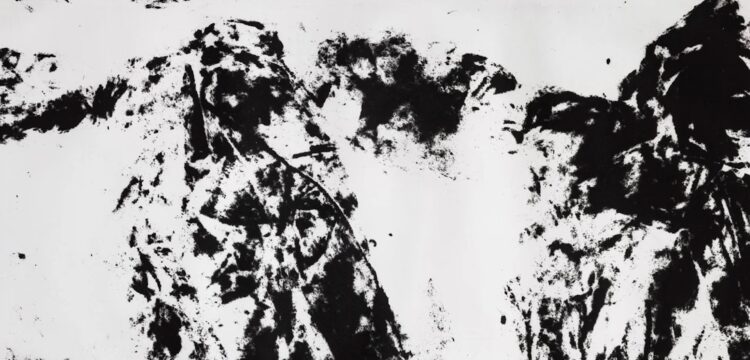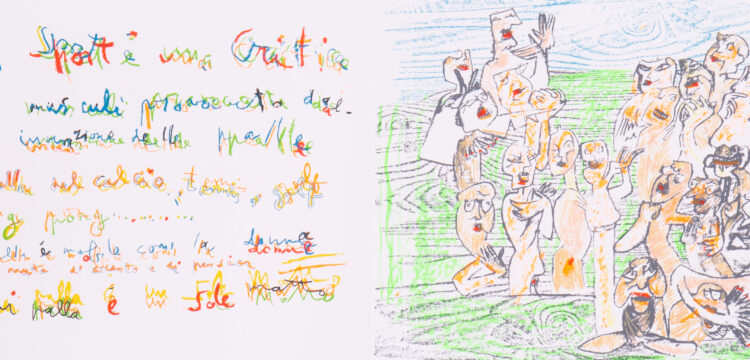The Small Utopia. Ars Multiplicata
Archive Actualized #Multipli: a conversation with L’Arengario Studio Bibliografico, Martincigh Bookshop, and Danilo Montanari Editore
This is the first of three coral interviews dedicated to galleries, specialized bookshops, and bibliographical offices as part of Archive Actualized #Multipli, a special issue in Replica’s series exploring the new MULTIPLE section of Arte Fiera, and its engaged gaze at multiplied art as a political, democratic, and utopian practice within the art system.
It is no longer a question of the eternal ‘masterpiece’—because art too is relative to the various civilisations, to the various epochs to which it responds—but of artworks that can live in today’s homes (which, in turn, are temporary, mass-produced, prefabricated homes) and that can one day be set aside, with the continual change in taste.
Guido Ballo, La mano e la macchina. Dalla serialità artigianale ai multipli,
Jabik & Colophon Editori-Sperling & Kupfer Editori, 1976
REPLICA: As you know, since we started working on the MULTIPLE section, a groundswell of discussion has opened up about this category, drawing a big question mark over what it means, and what it does or does not include.
Before the 1960s, the term “multiples” mostly referred to objects such as engravings, lithographs, etc. After that date, “multiplied art” refers to those works that originated from kinetic art research that combined art, industrial design, and technology, and that laid the foundations for an art made for everyone, with the aim of opening up a real process of democratization. In 2012, Germano Celant curated the exhibition The Small Utopia. Ars Multiplicata (Fondazione Prada, Venice). Here, the paradigm relating to the category is further expanded to include books, posters, newspapers, objects of various kinds, clothing, and even film and sound. What is your point of view?
L’Arengario Studio Bibliografico: My point of view does not differ from that of Germano Celant, that you mentioned: a vision partially expressed in his book Off-media (Dedalo, 1977) in which the production of videos, vinyl records and artist’s books was reckoned as contemporary art practice, and those understood as works of art, conceived and realized as objects to be seen, heard and read.
Our presence in the Arte Fiera is oriented towards a broader vision of the work of art, with an approach to the idea of multiplied and technologically reproducible art quite similar to the one addressed over fifty years ago in a famous exhibition entitled “Ars multiplicata – Vervielfältigte Kunst seit 1945”, held at the Wallraf-Richartz-Museums, Cologne, in 1968. This exhibition was fundamentally based on the principle that the uniqueness of the “original” should be supplemented by works of art conceived from the very beginning of their design as objects multiplied in an unlimited number of copies, at correspondingly low prices.
Martincigh Bookshop: The overcoming of the concept of the uniqueness of the work of art in the age of its technical reproducibility highlighted by Walter Benjamin was of fundamental importance for the dissemination of art, which became accessible and, above all, involved the general public, and allowed its participation.
Julio Le Parc, on the subject of kinetic art you mentioned, wrote in 1968, in Paris: “Painters continue to do their works, galleries and museums continue to exhibit them, critics continue to criticise them, dealers and collectors continue to value them for money, and the general public rightly remains indifferent… and away from an art of class, from an only consumable art, from an art that reaffirms in itself all the principles of power, from an art that maintains subordination and passivity in people”.
Working with multiples and artist’s books is beautiful and fascinating because they are not just a category: they are a living, integral part of the art world. The multiple understood in a broader vision—as a work in a limited and numbered edition or as a fragile paper flyer, a playbill for a performance event or a poetic declaration printed poorly on one’s own—is exciting material for study and in-depth research, sometimes indispensable as the only documentation of the work’s existence. Artist’s books, then, are autobiographies in the form of works, talking objects in palpitating, unexpected movement, and absolute relation to the author(s), in a precise historical moment and defined context, thus concrete evidence of existence in objects of simplified circulation and accessibility.
Danilo Montanari Editore: Complex question. I’d reply with a letter from my friend M., perhaps overly pessimistic and extreme, but which I find interesting, at least to begin a discussion: “Dear D. I cannot tell you much: it seems to me that the artist’s book is defunct, that it is rather a thing of the past. And then after all, in Italy, the true artist’s book was never born. The artist’s book remains a French creation. The artist’s book implies the presence of both the book and the artist: the book means the writer, and this type of collaboration between real writers and real artists has never existed in Italy. Today, then, I am not even sure that there are real writers, as there were in France until the 1960s, and also real artists”.
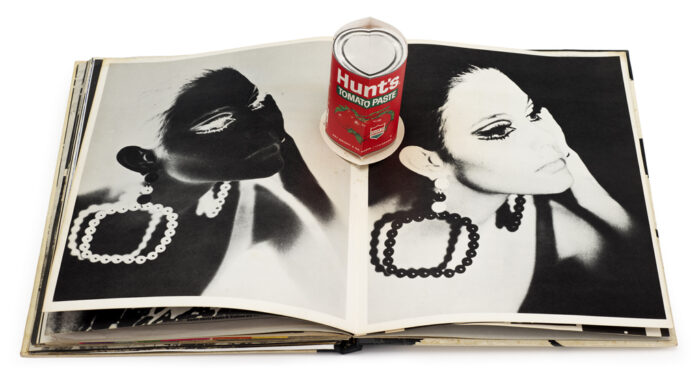
Unlike the publishing section of a fair, where publishers propose a heterogeneous selection of works, for the MULTIPLE section you were invited to realize an ad hoc project, more akin to the realization of a small exhibition. Could you tell us what you have imagined for this new Arte Fiera section? What aspects of your research as booksellers would you like to show to the public?
L’Arengario: The artists we have chosen for this new section of Arte Fiera are closely linked to two artistic currents: conceptual art and minimal art. These movements have profoundly marked the contemporary art scene from the 1960s to the early years of the second millennium by adopting means of expression that had never been used before. The selection of works we will be exhibiting reflects this peculiarity in the variety of forms and materials used: not only books, leporellos, graphics and posters, but also real objects made by the artists in wood, metal, plastic, and even marble. For twenty years now, our activity has focused on the study, research, and proposal of works whose objectification can be likened to that of a reproducible artistic artefact. The section on multiples and editions at Arte Fiera is a great opportunity to introduce the public to a collecting genre that is still little known to most art enthusiasts.
Martincigh: Starting with the exhibition of a diagram by George Maciunas from 1973, in which the birth and development of Fluxus are recounted in stages, we will juxtapose original books, objects and documents cited or evoked in the diagram. Within the context of 1970s conceptual art, we will present the entire publication of TAU/MA (1976-1981), a magazine in the form of an artist’s book, conceived by Claudio Parmiggiani and Mario Diacono, with contributions from many artists such as Emilio Villa, Richard Nonas, Michelangelo Pistoletto, Adriano Spatola, Emilio Prini, and others. Moreover, there will be three different versions of Vincenzo Agnetti’s Notes on the Portrait of Everyone, with the accompaniment of some artist’s books by Parmiggiani and Agnetti as co-authors. We will then present two rare original editions—a folder and a toy box—by Bruno Munari.
Montanari: I thought of presenting three artists in particular, very different and perhaps incompatible with each other, but united by the fact that I have been—and I still am—cultivating with each of them a relationship that is meaningful to me, both personally and in the work environment (I am speaking of Maurizio Cattelan, in the past tense, and of Giulio Paolini and Paolo Ventura).
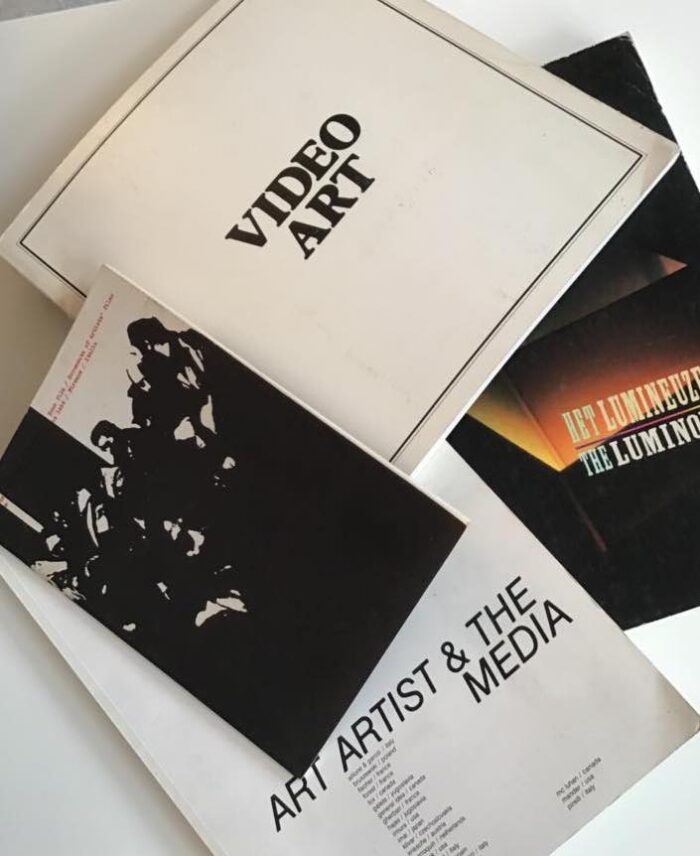
Among your proposals, what do you think is the multiple that should not be missing in a collection? What do you think is the most coveted object of desire?
L’Arengario: I would certainly suggest Andy Warhol’s Index Book, an artist’s book containing ten pop artworks, an iconic work created in 1967. At Arte Fiera we will present about one hundred works and, in my opinion, the most representative is an artist’s book by James Lee Byars published in 1981 in only fifty numbered and signed copies. It is a circular volume with a diameter of forty centimeters, consisting of two red leather covers containing a simple circular sheet of black tissue paper, in the center of which the title of the book is stamped in gold: See it is the gift.
Martincigh: It is a difficult question because all the paper (and non-paper) subjects chosen for Arte Fiera have their precise location in an ideal collection. I would say that right now we are particularly fond of Vincenzo Agnetti’s multiple Notes on the portrait of everyone, signed and numbered, printed in 100 copies in Milan by Jabik & Colophon, in 1975.
Montanari: Giulio Paolini’s The Keys to the Museum is a complex and articulated work, even in its workmanship, which, despite being multiple, marked a precise phase and passage in the artist’s career.

For one year now, L’Arengario has been taking part in different fairs together with the new publishing house Tonini Ed., founded in 2021 by Valentino Tonini and Andrea Bono. The publishing house is mainly engaged in the production of artist’s books—specifically the monthly series Autobiography, which takes its inspiration from Sol Lewitt’s book of the same name. For Arte Fiera, you have decided to present this series in a new format. Can you tell us more about it?
L’Arengario: As director and founder of the publishing house [Valentino Tonini], I personally answer this question. On the occasion of Arte Fiera, the Autobiography series will be presented as a multiple. The artist Michele Lombardelli (Cremona, 1968) will design a box set that will collect the twelve publications; this will be produced in a print run of ten copies, and each one will contain all the volumes—even those that are no longer available on our website (such as Autobiography no. 2 by Nathalie Du Pasquier or Autobiography no. 4 by Jonathan Monk). There are two reasons for our choice: the first concerns the form, as the series enclosed in a box set will better reflect the idea of the object; the second reason is that this will highlight the conceptual aspect of the project, which is not limited to mere editorial production. Autobiography is a true exhibition, which, unlike an exhibition, which is generally composed of physical works, finds its realization in the pages of a book, where the format reflects the rooms of an exhibition hall and the sixty-four pages of its walls.
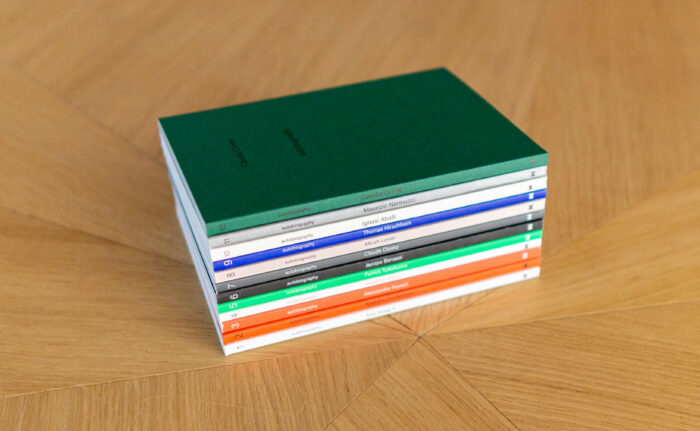
For Arte Fiera, Martincigh Bookshop decided to present a project partly dedicated to Fluxus. With the occasion of the 60th anniversary of the movement’s birth, many dedicated events have recently opened, such as the exhibition dedicated to the Italian Fluxus editions at the Museo del Novecento in Milan, but also the festival held last September in the city of Kaunas, or the initiative presented at the Museo di Villa Croce in Genoa. Could you tell us about your interest, and what aspect of this production you would like the public to grasp?
Martincigh: I have been passionately following Fluxus for a long time. Mine is not a contribution for the historical recurrence, but the result of a personal research out of elective affinity with one of the most beautiful and explicit modalities of that movement, given by the continuous effervescent vitality that the paper and multiple documents themselves indicate. The idea that a work of art is a work that generates other art and opens up in time and space is a concept that gives a very deep and concrete meaning to the research we are trying to propose. Some of the paper documents collected have developed into contemporary artworks, to our great joy and participation, as in the case of the collaboration with pianist Agnese Toniutti, who performed and interpreted for the first time a score by Fluxus artist Dick Higgins, The Ear of Emmett Williams (1977), for which the precise performance instructions are reduced to graphic signs and drawings far removed from the “notes”.
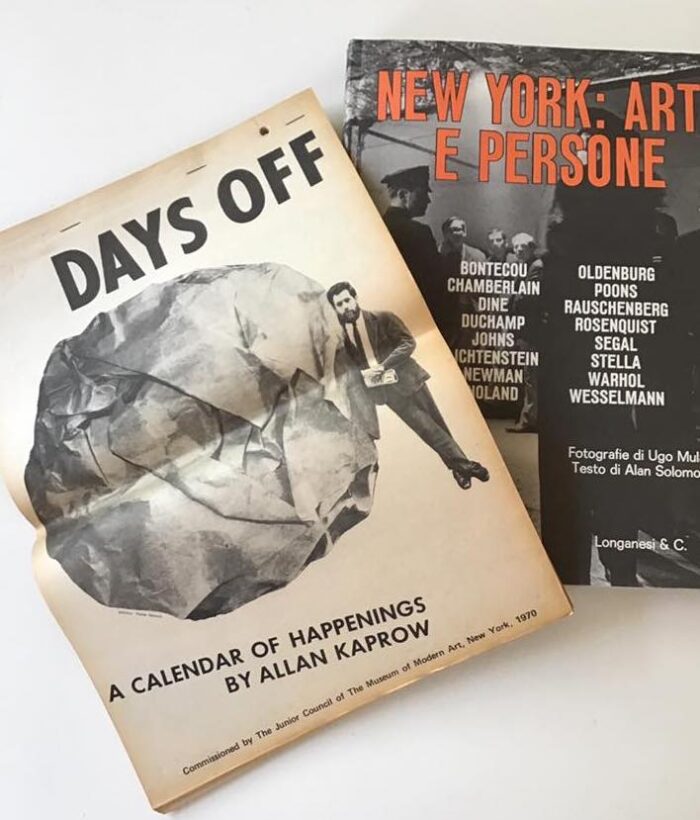
Among the selection of editions and artist books Danilo Montanari Ed. presented at the fair, the name Mario Diacono stands out. What relationship have you built over the course of your professional career with this figure for whom publishing has always represented a radical response to more official contexts?
Montanari: I met Mario Diacono in the late 1970s, in his small gallery in Bologna. To be precise, I got to know him, but he did not get to know me. I was then taking my very first steps, while he was already Diacono; then, I followed him over time, even in my collection. In my feeling, Mario, more than anyone else, even more than Celant, has a precise idea of the artist’s book, because it is a subject that he has always followed and studied and because he himself, unlike Celant, has tried his hand at it several times. Suffice to think, among others, of his work with Claudio Parmiggiani. Then, by a coincidence due to my collaboration with the Maramotti collection (an artist’s book with a text by Diacono and works by Massimo Antonaci), we began a working relationship, and also a friendship, which is fundamental when doing an artist’s book. Today Mario is about to turn 93, I am 70, and we are working on a new book: Anarch&types.
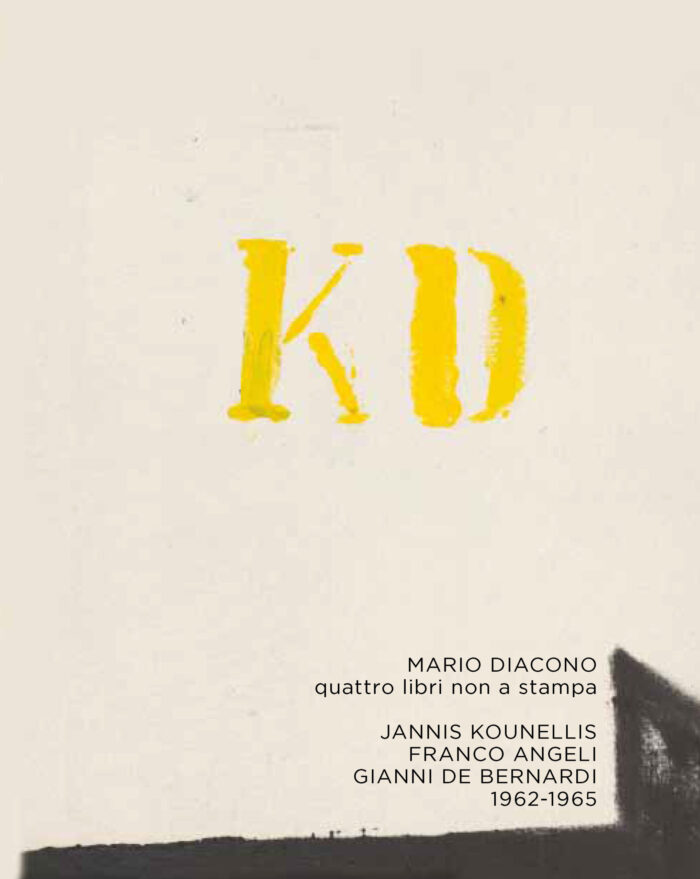
One of the reasons that prompted Simone Menegoi, Artistic Director of Arte Fiera, to inaugurate this new section is to make the fair a more inclusive moment. As exhibitors, what is your point of view with respect to this stance in a context mainly connected to the art market?
L’Arengario: An art fair cannot be reduced to being merely a commercial showcase of unattainable and exclusive works. I certainly approve of this initiative because I believe that a careful look at these different expressions of artistic production can initiate a reflection on the possibilities and advantages that can come from it. It is a stimulating challenge that I hope will not remain isolated.
Martincigh: It is a good project because, as we said at the beginning, the multiple is an art form that is accessible to a wider and even otherwise uninterested public. It is a purchasing opportunity that in some cases can be unique or difficult to repeat.
Editorial and documentary support is then indispensable to the development of a quality fair that looks to the future of art with confidence and concreteness, where touch, sight, sensitivity, and knowledge are body, matter, and not just pixels.
Montanari: The art market is vast, the market for multiples is more specific, and collecting is more limited, particularly in Italy. This is a cultural fact because in our country we think of the multiple as a surrogate for the work and not, as it is, a different product, but still the artist’s highest and original expression. The MULTIPLE section is a step in the right direction, hoping to make interesting encounters.




